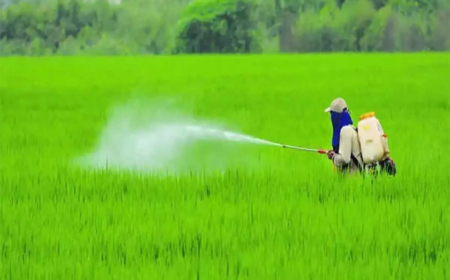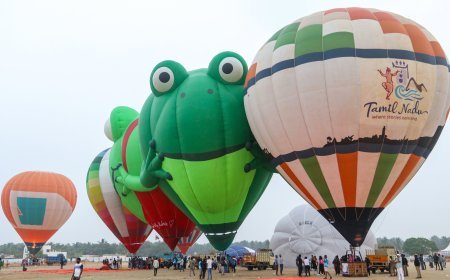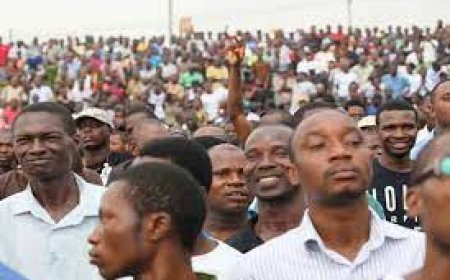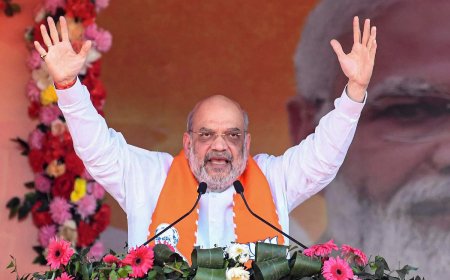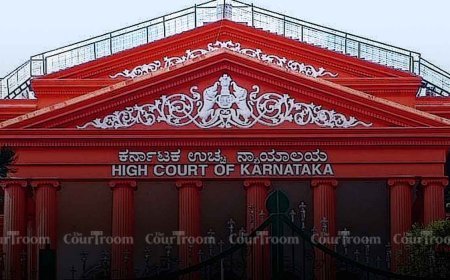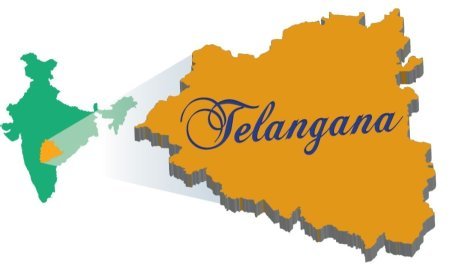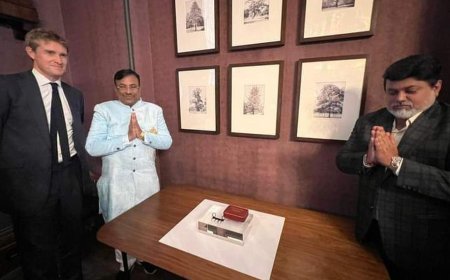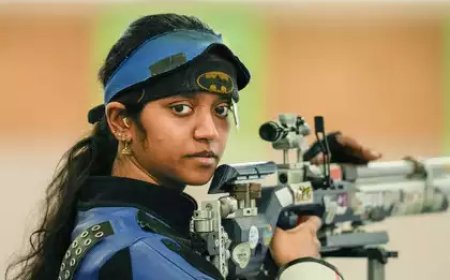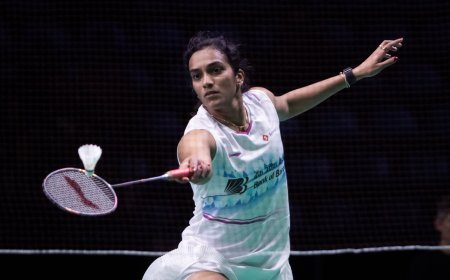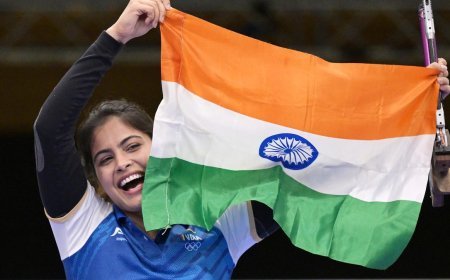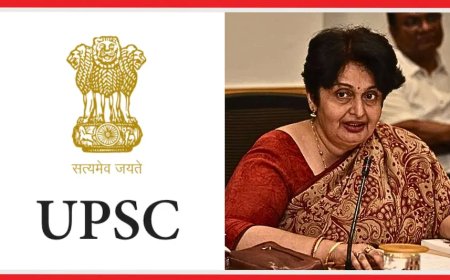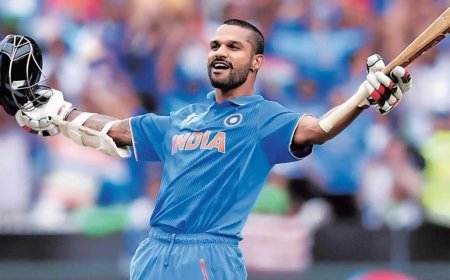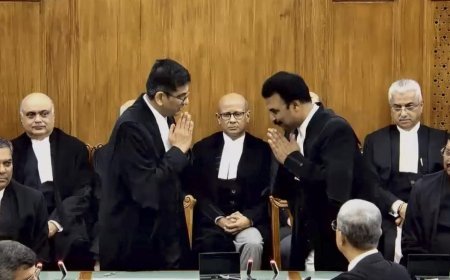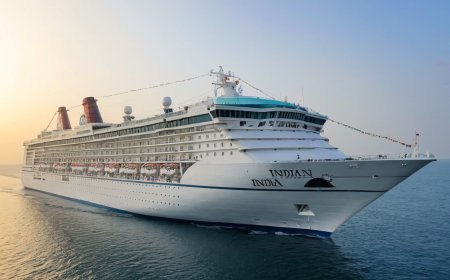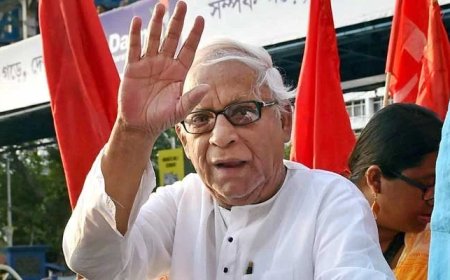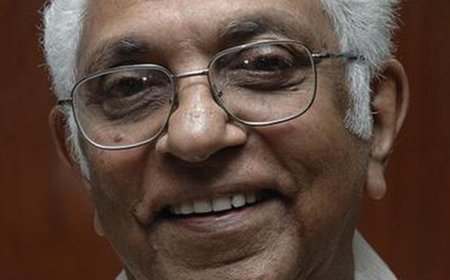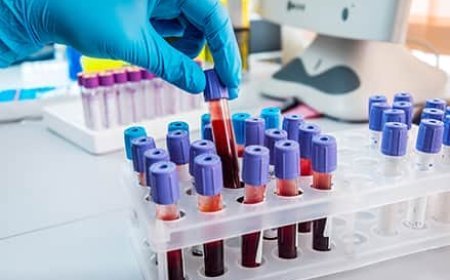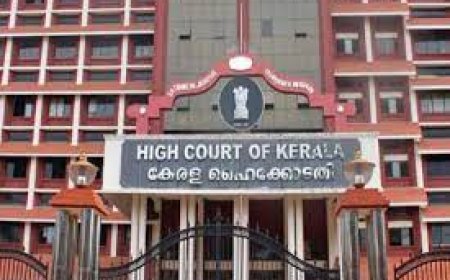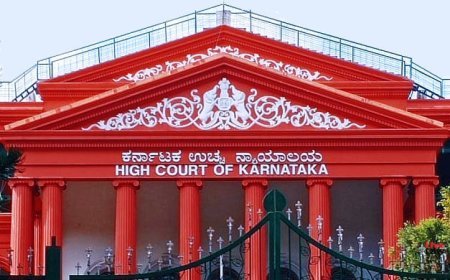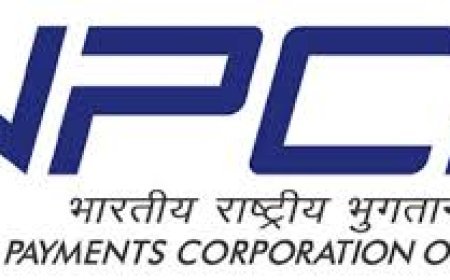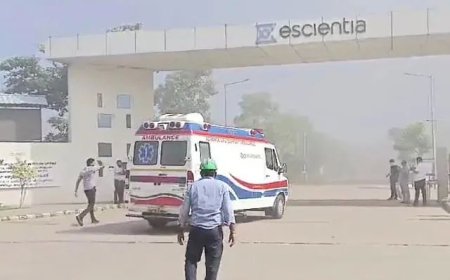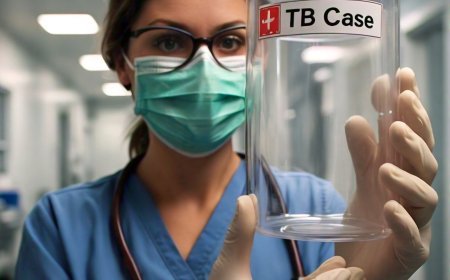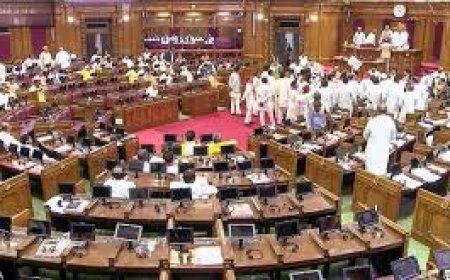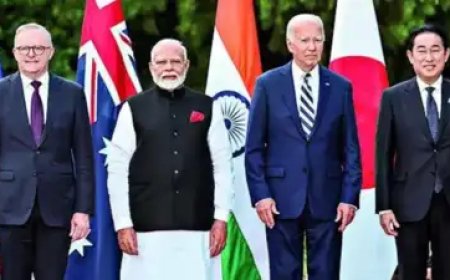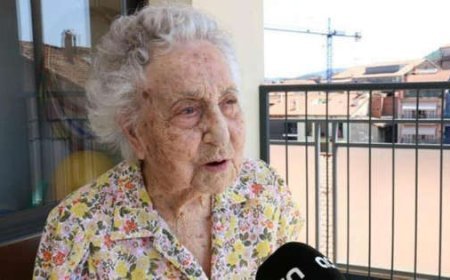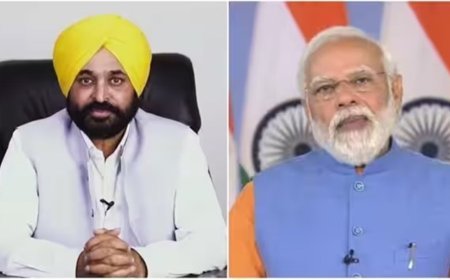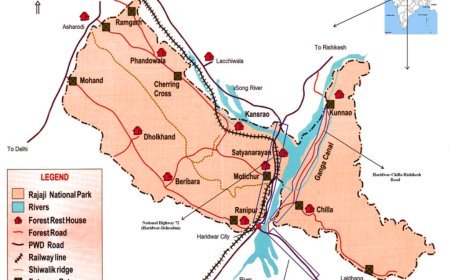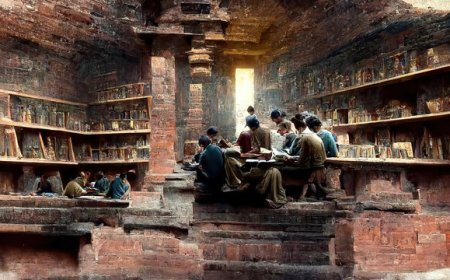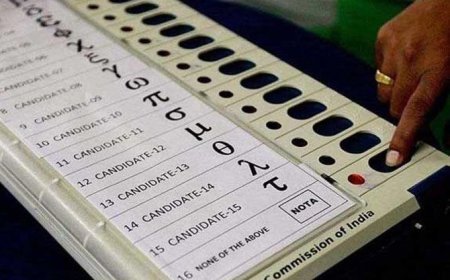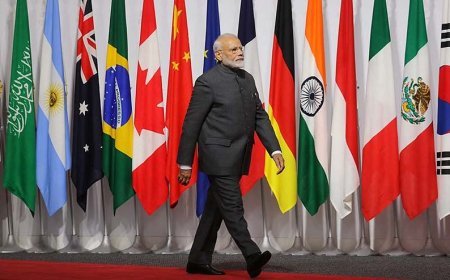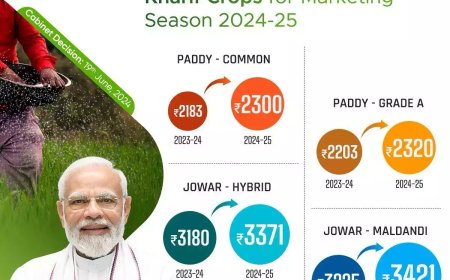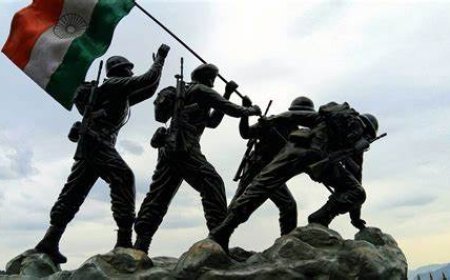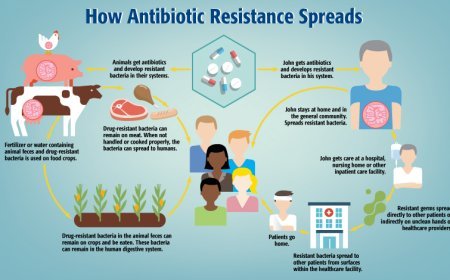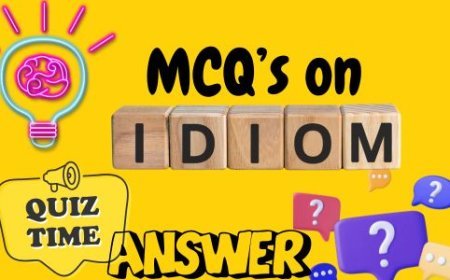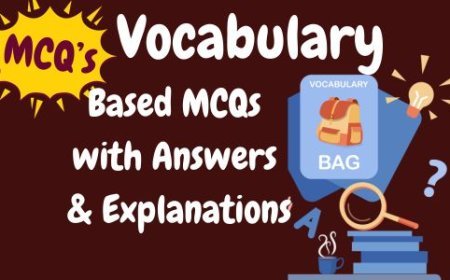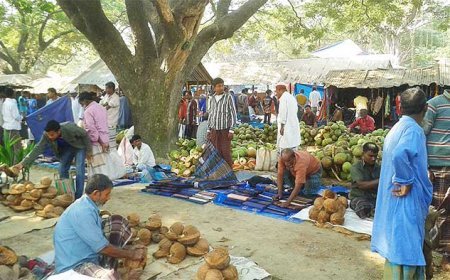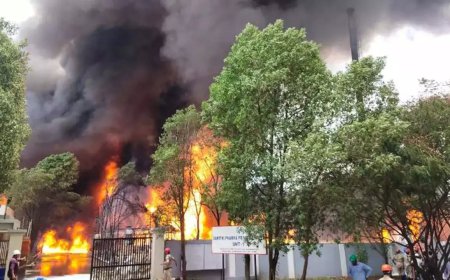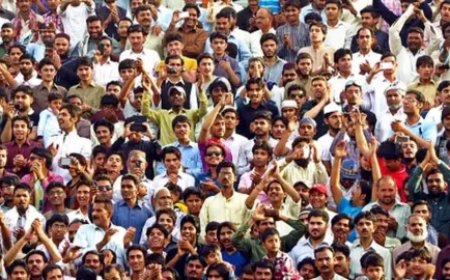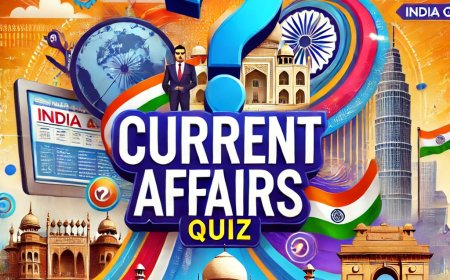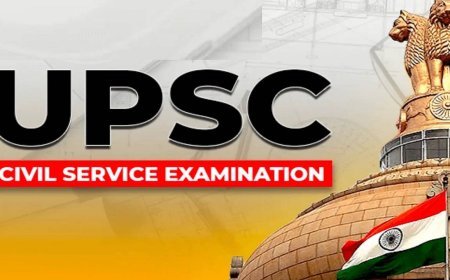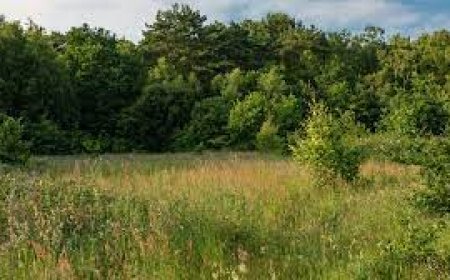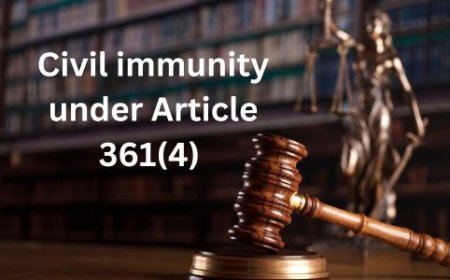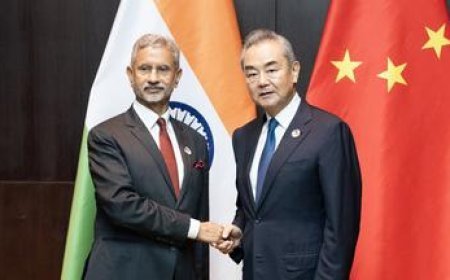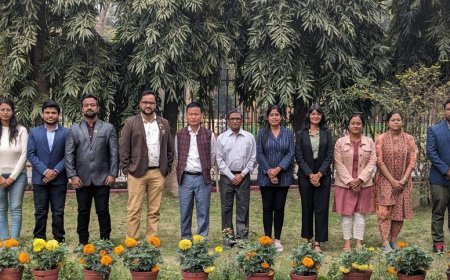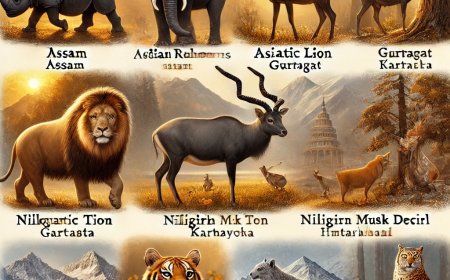Master through questions Current affairs 30 th July 2024

Master through questions Current affairs 30 th July 2024
What is the primary objective of the National Policy for Rare Diseases (NPRD) 2021 in India?
A) To provide financial support exclusively for cancer treatment
B) To promote the export of rare disease drugs
C) To manage patients with rare diseases through prevention, early detection, and treatment
D) To exclusively support the development of rare disease research institutes abroad
Answer: C
Explanation: The National Policy for Rare Diseases (NPRD) 2021 was launched by the Ministry of Health and Family Welfare, Government of India, with the primary objective of addressing the challenges faced by patients with rare diseases. The policy aims to manage these conditions through several key strategies:
1. Prevention: This includes awareness programs, genetic counseling, and screening to prevent the occurrence of rare diseases, particularly in families at risk.
2. Early Detection: The policy emphasizes the importance of early diagnosis, which is crucial for managing rare diseases effectively. Early detection can improve treatment outcomes and quality of life for patients.
3. Treatment: NPRD 2021 provides for treatment facilities at designated Centres of Excellence (CoEs). These centers are equipped to offer specialized care, including access to necessary medications and therapies. The policy also includes financial assistance to help patients afford these treatments.
The policy does not focus exclusively on cancer treatment (Option A) or the export of drugs (Option B), nor does it solely support the development of research institutes abroad (Option D).
2. Which of the following is NOT a feature of the NPRD 2021?
A) Categorization of rare diseases into three groups
B) Provision of up to Rs. 50 lakhs financial support for treatment
C) Establishment of Centres of Excellence (CoEs) for treatment
D) Mandatory treatment at private hospitals only
Answer: D
Explanation: The NPRD 2021 includes several significant features to address the challenges of rare diseases:
1. Categorization of Diseases: The policy categorizes rare diseases into three groups based on treatment availability, cost, and the need for lifelong management. This helps in prioritizing resource allocation and care strategies.
2. Financial Support: The policy provides financial support up to Rs. 50 lakhs for patients requiring treatment for any rare disease at designated CoEs. This support is crucial for families struggling with the high costs of rare disease treatments.
3. Centres of Excellence (CoEs): These are specialized centers identified for the diagnosis, prevention, and treatment of rare diseases. They receive funding for infrastructure development to ensure they have the necessary facilities for comprehensive care.
The policy does not mandate treatment exclusively at private hospitals (Option D). Instead, treatment can occur at any designated CoE, which may include both government and private institutions.
3. In NPRD 2021, what type of diseases are classified under Group 1?
A) Disorders requiring lifelong treatment with high costs
B) Diseases amenable to one-time curative treatment
C) Diseases with well-documented benefits requiring periodic surveillance
D) Disorders with no available definitive treatment
Answer: B
Explanation: Group 1 under the NPRD 2021 includes diseases that can be potentially cured with a one-time treatment. This group is significant because:
1. One-time Curative Treatment: These diseases can be treated definitively through a single therapeutic intervention, such as surgery or a specific drug therapy, eliminating the need for ongoing treatment.
2. Focus on Early Intervention: The emphasis is on early diagnosis and treatment to maximize the chances of a cure. This approach can significantly reduce the long-term burden on patients and the healthcare system.
3. Cost-effectiveness: By providing a one-time curative treatment, the policy aims to reduce the overall cost of care and improve outcomes for patients.
Examples might include certain metabolic disorders that can be managed or cured through dietary changes or enzyme replacement therapy provided at an early stage.
4. What is the maximum one-time grant provided to Centres of Excellence (CoEs) for infrastructure development under NPRD 2021?
A) Rs. 2 crore
B) Rs. 5 crore
C) Rs. 10 crore
D) Rs. 50 lakh
Answer: B
Explanation: The NPRD 2021 provides a substantial one-time grant to designated Centres of Excellence (CoEs) for infrastructure development. This grant, capped at Rs. 5 crore, is intended to:
1. Enhance Infrastructure: The funding is aimed at improving the diagnostic, testing, and treatment facilities at these centers. This includes equipment for genetic testing, specialized labs, and other necessary facilities for comprehensive care.
2. Support Treatment Capacity: By investing in infrastructure, the policy seeks to expand the capacity of CoEs to handle a greater number of patients and offer a wider range of treatments, thus improving access to care.
3. Long-term Benefits: The development of CoEs with advanced facilities ensures sustainable and high-quality care for patients with rare diseases, supporting both immediate treatment needs and ongoing research.
This financial support is crucial for ensuring that CoEs can provide the necessary specialized services required by patients with rare diseases.
5. Which group under NPRD 2021 includes diseases requiring lifelong treatment with a very high cost and challenges in patient selection for treatment?
A) Group 1
B) Group 2
C) Group 3
D) None of the above
Answer: C
Explanation: Group 3 under NPRD 2021 addresses diseases with specific and significant challenges:
1. Lifelong Treatment: Diseases in this category require ongoing, often lifelong treatment, which can be highly burdensome for patients and their families. These treatments are typically necessary to manage symptoms or slow disease progression, rather than to cure the disease.
2. High Cost: The treatments for Group 3 diseases are generally very expensive. This high cost can be due to the nature of the drugs, the complexity of the therapies involved, or the necessity of frequent and advanced medical interventions.
3. Patient Selection Challenges: Not all patients with these diseases are eligible for the available treatments. Factors such as the stage of the disease, patient age, and other medical conditions can affect the suitability of certain therapies. This requires a careful and often complex process of patient selection to ensure that those who are most likely to benefit are identified.
4. What is the primary purpose of the Pollution Under Control (PUC) Certificate in India?
A) To verify the vehicle's registration details
B) To ensure vehicles meet environmental emission standards
C) To check the fuel efficiency of the vehicle
D) To provide insurance coverage for the vehicle
Answer: B
Explanation: The PUC Certificate serves as a validation document confirming that a vehicle's emissions are within the permissible levels set by the government. It is a crucial measure to ensure vehicles on the road adhere to environmental emission standards, thereby controlling air pollution. The certificate is mandatory under the Central Motor Vehicles Rule 1989, and all vehicles must possess it to legally operate on Indian roads.
5. For how long is a PUC certificate usually valid after it is issued?
A) Six months
B) One year
C) Two years
D) Three months
Answer: B
Explanation: A PUC certificate is typically valid for one year from the date of issue. After this period, the vehicle must undergo another PUC test to renew the certificate. This regular testing ensures that vehicles continue to comply with the emission standards over time.
6. What are the potential penalties for not possessing a valid PUC certificate in India?
A) A fine of up to Rs 5,000 and vehicle impoundment
B) A warning and a grace period to obtain the certificate
C) A fine of up to Rs 10,000, imprisonment for up to six months, or both
D) Cancellation of vehicle registration
Answer: C
Explanation: According to the Motor Vehicle Act, failing to produce a valid PUC certificate can result in a fine of up to Rs 10,000, six months of imprisonment, or both. Additionally, the vehicle owner may be disqualified from holding their driving license for three months. These stringent penalties are designed to enforce compliance and reduce vehicular pollution.
7. What should a vehicle owner do if their vehicle's emissions exceed the prescribed limits despite having a valid PUC certificate?
A) Continue driving as the certificate is still valid
B) Get the vehicle repaired and obtain a new PUC certificate within seven days
C) Notify the transport department but continue driving
D) Appeal for a recheck at the same test center
Answer: B
Explanation: If a vehicle's emissions are found to exceed the prescribed limits, the existing PUC certificate will be cancelled, regardless of its validity. The vehicle owner must then repair the vehicle to bring it within acceptable emission levels and obtain a new PUC certificate within seven days. This ensures that vehicles contributing to pollution are promptly addressed.
8. Which types of vehicles are required to have a PUC certificate according to the PUC certificate rules?
A) Only diesel vehicles
B) Only petrol vehicles
C) Only electric vehicles
D) All vehicles including petrol, diesel, and CNG-powered vehicles
Answer: D
Explanation: The PUC certificate rules apply to all vehicles, including those powered by petrol, diesel, and compressed natural gas (CNG). This comprehensive requirement ensures that all types of vehicles contribute to maintaining air quality standards. Electric vehicles, however, are typically exempt due to their zero-emission nature.
9. What is the primary age group targeted by the NIPUN Bharat Mission?
A) 5 to 10 years
B) 6 to 12 years
C) 3 to 9 years
D) 7 to 14 years
Answer: C
Explanation: The NIPUN Bharat Mission specifically focuses on children aged 3 to 9 years, covering pre-school to Grade 3. This age group is crucial for developing foundational literacy and numeracy skills, which are essential for further learning and cognitive development.
10. Which centrally sponsored scheme does the NIPUN Bharat Mission fall under?
A) Mid-Day Meal Scheme
B) Samagra Shiksha
C) Sarva Shiksha Abhiyan
D) Rashtriya Madhyamik Shiksha Abhiyan
Answer: B
Explanation: The NIPUN Bharat Mission is implemented under the Samagra Shiksha scheme, a comprehensive program aimed at improving the quality of education across all levels from pre-primary to higher secondary. This integration ensures a coordinated effort to enhance foundational skills among young learners.
11. What is the main objective of the NIPUN Bharat Mission?
A) To improve infrastructure in higher education institutions
B) To promote vocational training for high school students
C) To achieve universal acquisition of Foundational Literacy and Numeracy (FLN) skills by 2026-27
D) To implement digital learning platforms in all schools
Answer: C
Explanation: The primary goal of the NIPUN Bharat Mission is to achieve universal acquisition of Foundational Literacy and Numeracy (FLN) skills by 2026-27. This objective aims to ensure that all children in the target age group acquire the necessary skills to understand and use language and numbers effectively, setting a strong foundation for future learning.
12. How many tiers are involved in the implementation mechanism of the NIPUN Bharat Mission?
A) Three
B) Four
C) Five
D) Six
Answer: C
Explanation: The NIPUN Bharat Mission employs a five-tier implementation mechanism, which includes the National, State, District, Block, and School levels. This structured approach facilitates comprehensive monitoring and support at every level, ensuring effective implementation of the mission's objectives across all States and Union Territories.
13. Which types of schools are expected to participate in achieving the goals of the NIPUN Bharat Mission?
A) Only Government schools
B) Only Government and Government-aided schools
C) Only Private schools
D) All Government, Government-aided, and Private schools
Answer: D
Explanation: The goals and objectives of the NIPUN Bharat Mission are required to be achieved by all types of schools, including Government, Government-aided, and Private schools. This inclusive approach ensures that foundational literacy and numeracy skills are universally acquired, reaching every child in the specified age group.
14. Livermorium belongs to which category of elements?
A) Alkali metals
B) Noble gases
C) Superheavy elements
D) Lanthanides
Answer: C
Explanation: Livermorium is classified as a "superheavy" element. Superheavy elements are those that have an atomic number greater than 104. These elements are typically very unstable and do not exist naturally; they must be synthesized in laboratories. Livermorium, with an atomic number of 116, fits this category.
15. How was livermorium first produced?
A) By fusing curium-248 with calcium-48
B) By smashing together carbon and hydrogen atoms
C) By natural processes in the Earth's crust
D) By heating silicon to extremely high temperatures
Answer: A
Explanation: Livermorium was first synthesized in 2000 when scientists at the Joint Institute for Nuclear Research in Dubna, Russia, and the Lawrence Livermore National Laboratory in Livermore, California, successfully fused curium-248 with calcium-48. This fusion process produced atoms of livermorium, marking a significant achievement in the field of superheavy element research.
16. Why is livermorium considered significant in scientific research?
A) It is the most stable superheavy element discovered
B) Its discovery provides insights into creating even heavier elements
C) It occurs naturally and is abundant in the Earth's crust
D) It has immediate practical applications in technology
Answer: B
Explanation: The creation of livermorium is significant because it demonstrates a method that could potentially be used to synthesize even heavier elements, such as element 120. The study of such superheavy elements can provide valuable insights into the behavior of atoms at their highest atomic numbers, expanding our understanding of nuclear physics and chemistry.
17. What was used as a target material in the production of livermorium?
A) Titanium-50
B) Curium-248
C) Plutonium
D) Calcium-48
Answer: C
Explanation: In the process of creating livermorium, researchers targeted a thin layer of plutonium with a highly intense beam of titanium-50. This setup was crucial in the production of the superheavy element, as the interaction between the titanium ions and the plutonium target led to the synthesis of livermorium atoms.
18. How long did the researchers take to produce the first atoms of livermorium?
A) 10 days
B) 15 days
C) 22 days
D) 30 days
Answer: C
Explanation: The researchers at the Joint Institute for Nuclear Research and Lawrence Livermore National Laboratory took 22 days to produce the first atoms of livermorium. The process involved using a particle accelerator to smash together titanium-50 atoms and a plutonium target, resulting in the creation of this superheavy element.
19. INS Tabar belongs to which class of frigates in the Indian Navy?
A) Shivalik-class
B) Godavari-class
C) Talwar-class
D) Nilgiri-class
Answer: C
Explanation: INS Tabar is the third of the Talwar-class frigates in the Indian Navy. The Talwar-class is a series of stealth frigates built for the Indian Navy in Russia. These ships are equipped with advanced sensors and weapons, including the supersonic BrahMos missile system.
20. When was INS Tabar commissioned into the Indian Navy?
A) 2000
B) 2002
C) 2004
D) 2006
Answer: C
Explanation: INS Tabar was commissioned into the Indian Navy on 19 April 2004 in Kaliningrad, Russia. The ship has been an active part of the Indian Navy's Western Fleet since its commissioning.
21. Which advanced missile system is INS Tabar equipped with?
A) Agni Missile
B) Barak-8
C) BrahMos
D) Prithvi
Answer: C
Explanation: INS Tabar is equipped with the BrahMos missile system, which is a supersonic cruise missile that can be used against ships and land targets. The inclusion of BrahMos significantly enhances the ship's strike capabilities, making it a formidable asset in the Indian Navy.
22. What is the maximum speed of INS Tabar?
A) 25 knots
B) 28 knots
C) 30 knots
D) 32 knots
Answer: C
Explanation: The maximum speed of INS Tabar is 30 knots (56 km/h; 35 mph). This speed allows the frigate to quickly respond to various maritime situations, whether it is in defense or in support of other naval operations.
23. What is the range of INS Tabar at a cruising speed of 14 knots?
A) 1,600 nautical miles
B) 2,500 nautical miles
C) 3,800 nautical miles
D) 4,850 nautical miles
Answer: D
Explanation: At a cruising speed of 14 knots (26 km/h; 16 mph), INS Tabar has a maximum range of 4,850 nautical miles (8,980 km; 5,580 mi). This extensive range enables the ship to undertake long-duration missions without requiring frequent refueling.
24. What is the recent medical case reported in Kozhikode, Kerala?
A) An outbreak of dengue fever
B) A new case of Primary Amoebic Meningoencephalitis (PAM)
C) A cluster of malaria cases
D) A resurgence of swine flu
Answer: B
Explanation: The recent medical case reported in Kozhikode, Kerala, is a new case of Primary Amoebic Meningoencephalitis (PAM). A four-year-old boy tested positive for the infection, marking the seventh confirmed case in the state this year.
25.How was the recent case of Primary Amoebic Meningoencephalitis in Kozhikode confirmed?
A) Blood test
B) MRI scan
C) Polymerase Chain Reaction (PCR) test
D) CT scan
Answer: C
Explanation: The recent case of Primary Amoebic Meningoencephalitis (PAM) in Kozhikode was confirmed using a Polymerase Chain Reaction (PCR) test conducted in Puducherry. PCR tests are essential for detecting specific genetic material, making them useful in diagnosing infections like PAM.
26. What are the reported fatality and recovery statistics for Primary Amoebic Meningoencephalitis in Kerala as per the recent update?
A) Three deaths and two recoveries
B) No deaths but multiple recoveries
C) Only one recovery and no deaths
D) Five deaths and no recoveries
Answer: A
Explanation: According to the recent update, three children in Kerala have tragically died from Primary Amoebic Meningoencephalitis since May. However, there have also been two reported recoveries: a 12-year-old boy named Muhammed Ajsal and another 14-year-old boy, Afnan Jasim, marking a rare survival from this deadly disease.
27. What key factor contributed to the survival of the 12-year-old boy, Muhammed Ajsal, who recovered from the infection?
A) The use of experimental drugs
B) Immediate placement on a ventilator and intensive care
C) Traditional herbal treatments
D) Surgery to remove infected brain tissue
Answer: B
Explanation: Muhammed Ajsal's survival was attributed to the immediate placement on a ventilator and intensive care. His critical condition required specialized treatment and close monitoring, which included reducing brain inflammation. The ICU and supportive care played a crucial role in his recovery.
28. What significant step was taken by the Department of Health Services in Kerala following the recent cases of amoebic meningoencephalitis?
A) They declared a public health emergency
B) They issued new treatment guidelines for the disease
C) They mandated mass vaccinations
D) They closed all public swimming pools
Answer: B
Explanation: Following the recent cases of amoebic meningoencephalitis, the Department of Health Services in Kerala issued new treatment guidelines. The guidelines aim to improve the management of the disease, and the case report of Muhammed Ajsal will be used to help revise these guidelines, particularly concerning treatment protocols for the infection caused by Vermamoeba Vermiformis.
29. What is the primary reason Indian businesses are seeking more visas for Chinese technicians?
A) To improve cultural exchange between India and China
B) To fill a significant skill gap in Indian factories
C) To promote tourism from China
D) To establish new trade routes
Answer: B
Explanation: Indian businesses are seeking more visas for Chinese technicians primarily to address a significant skill gap between Chinese and Indian factory supervisors and workers. Chinese professionals are seen as highly productive and are needed to efficiently operate machines and meet production goals, as illustrated by the example of a shoe manufacturer who noted that Chinese experts could help produce more items with the same resources.
30. Which sector mentioned in the article has been specifically highlighted for needing Chinese technicians to operate purchased machines?
A) Food processing
B) Footwear and textiles
C) Pharmaceuticals
D) Automotive manufacturing
Answer: B
Explanation: The sectors highlighted in the article include footwear, textiles, engineering, and electronics. Indian businesses in these sectors have purchased machines from China but require the expertise of Chinese technicians to use them productively, as these machines are currently lying idle, leading to unfulfilled export orders.
31. What is the major challenge faced by India in integrating foreign expertise, particularly from China, according to the article?
A) The high cost of visas
B) A security-driven mindset leading to restricted visas
C) Lack of available Chinese experts
D) Language barriers
Answer: B
Explanation: The major challenge in integrating foreign expertise from China is a security-driven mindset that has led to restrictive visa policies. After deadly clashes between Indian and Chinese troops in 2020, the number of visas issued to Chinese personnel dropped significantly. Concerns over national security and issues like visa condition violations and alleged money laundering have contributed to these restrictions.
32. What educational issue is highlighted as a critical problem in India, affecting its ability to utilize foreign expertise and grow economically?
A) Lack of infrastructure in rural schools
B) Low quality of education leading to a skill deficit
C) Excessive focus on vocational training
D) Overcrowded classrooms
Answer: B
Explanation: The article highlights the low quality of Indian education as a critical problem, creating a significant skill deficit. This issue makes foreign expertise especially urgent, as Indian workers often lack the necessary skills to operate advanced machinery or engage in more sophisticated industrial processes. The article contrasts India's situation with that of China and other East Asian countries, where strong educational foundations have facilitated the effective integration of foreign knowledge.
33. What is the "Red Queen race" metaphor used to describe in the context of the article?
A) The competition between India and China in sports
B) The need for rapid and continuous improvement to maintain global competitiveness
C) The rivalry between different political parties in India
D) The race to achieve the highest GDP growth rate
Answer: B
Explanation: The "Red Queen race" metaphor, borrowed from Lewis Carroll’s Through the Looking Glass, describes the necessity of rapid and continuous improvement to maintain global competitiveness. The article uses this metaphor to emphasize that countries like China are constantly advancing in education and technology, and India must similarly improve its educational system and workforce skills to compete on a global scale. The metaphor suggests that standing still means falling behind in a rapidly progressing world.
34. What is the primary purpose of India's deal for 31 MQ-9B UAVs with the United States?
A) To replace outdated aircraft in the Indian Air Force
B) For surveillance and reconnaissance operations
C) To aid in humanitarian missions
D) For civilian air traffic control
Answer: B
Explanation: The primary purpose of India's deal for 31 MQ-9B High Altitude Long Endurance (HALE) Unmanned Aerial Vehicles (UAVs) is for surveillance and reconnaissance operations. These UAVs, including 15 Sea Guardians for the Navy and 16 Sky Guardians for the Army and Air Force, are designed to provide advanced intelligence, surveillance, and reconnaissance capabilities.
35. What significant facility is General Atomics expected to establish in India as part of the MQ-9B deal?
A) A training academy for UAV pilots
B) A Global Maintenance, Repair and Overhaul (MRO) facility
C) A manufacturing plant for UAV components
D) A satellite communication center
Answer: B
Explanation: As part of the MQ-9B deal, General Atomics is expected to establish a Global Maintenance, Repair and Overhaul (MRO) facility in India. This facility will contribute to offset obligations and enhance the local capability for maintaining and servicing UAVs.
36. What is the estimated cost of the MQ-9B UAV deal between India and the United States?
A) $1.99 billion
B) $2.99 billion
C) $3.99 billion
D) $4.99 billion
Answer: C
Explanation: The estimated cost of the deal for 31 MQ-9B UAVs is $3.99 billion. This includes the procurement of both Sea Guardians for the Indian Navy and Sky Guardians for the Indian Army and Air Force.
37. What new equipment has the Defence Acquisition Council (DAC) approved for the Indian Army’s Armoured Fighting Vehicles (AFVs)?
A) Advanced radar systems
B) Enhanced armor plating
C) Advanced Land Navigation System (ALNS) Mk-II
D) Upgraded communication systems
Answer: C
Explanation: The DAC has approved the procurement of the Advanced Land Navigation System (ALNS) Mk-II for the Indian Army's Armoured Fighting Vehicles (AFVs). This system is compatible with the Indian Regional Navigation Satellite System (IRNSS, NavIC) and provides high accuracy in navigational applications, with spoof-proof technology and high levels of encryption.
38. For what purpose are the 22 Interceptor Boats being procured by the Indian Coast Guard?
A) Deep-sea fishing
B) Anti-piracy operations
C) Coastal surveillance and patrolling
D) Cargo transport
Answer: C
Explanation: The 22 Interceptor Boats being procured by the Indian Coast Guard are intended for coastal surveillance and patrolling, as well as for search and rescue operations, including medical evacuation. These boats are equipped with state-of-the-art systems for quick interception and shallow water operations in territorial waters.
39. According to the RRAG report, how many people are expected to be displaced by Project Tiger post-2021?
A) 1,60,000
B) 2,54,794
C) 2,90,000
D) 5,50,000
Answer: D
Explanation: The RRAG report indicates that Project Tiger is expected to displace at least 5.5 lakh (550,000) Scheduled Tribes and other forest dwellers post-2021. This figure represents a significant increase in displacement rates compared to the pre-2021 period.
40.Which tiger reserve is reported to have the highest number of people to be displaced since 2021?
A) Nauradehi Wildlife Sanctuary
B) Kumbhalgarh Wildlife Sanctuary
C) Ranipur Tiger Reserve
D) Srivilliputhur-Megamalai Tiger Reserve
Answer: B
Explanation: The Kumbhalgarh Wildlife Sanctuary in Rajasthan is reported to have the highest number of people to be displaced since 2021, with approximately 1,60,000 people affected. This displacement is part of the larger trend highlighted by the RRAG report.
41. What criticism does the RRAG report levy regarding the designation of areas as tiger reserves?
A) Lack of adequate tiger populations in the designated areas
B) Overestimation of the number of tigers
C) Insufficient infrastructure for tourists
D) Failure to seek free, prior, and informed consent from tribal communities
Answer: D
Explanation: The RRAG report criticizes the process of designating areas as tiger reserves for not seeking free, prior, and informed consent from the affected tribal communities, as required under the Forest Rights Act and the Wildlife (Protection) Act of 1972. Consent is only sought for forcible relocation after an area has been designated as a tiger reserve.
42. Which of the following tiger reserves was noted for having no tigers despite displacing tribal families?
A) Ranipur Tiger Reserve
B) Kumbhalgarh Wildlife Sanctuary
C) Sahyadri Tiger Reserve
D) Srivilliputhur-Megamalai Tiger Reserve
Answer: C
Explanation: The Sahyadri Tiger Reserve in Maharashtra, along with Satkosia (Odisha), Kamlang (Arunachal Pradesh), Kawal (Telangana), and Dampa (Mizoram), was noted in the RRAG report for having no tigers despite the displacement of tribal families.
43. What positive example of coexistence between indigenous peoples and tigers does the RRAG report highlight?
A) Ranthambore National Park
B) Kaziranga National Park
C) Biligiri Rangaswamy Temple Tiger Reserve
D) Periyar Tiger Reserve
Answer: C
Explanation: The RRAG report highlights the Biligiri Rangaswamy Temple Tiger Reserve in Karnataka as a positive example of coexistence between indigenous peoples and tigers. The Soliga tribal people have been allowed to live in the core area of the reserve, where the tiger population almost doubled from 35 to 68 between 2010 and 2014, demonstrating a successful model of conservation with community involvement.
44. Who launched the 'Ideas4LiFE' initiative at IIT Delhi?
A) Prime Minister Narendra Modi
B) Union Minister Bhupender Yadav
C) Minister of State Kirti Vardhan Singh
D) Secretary (EF&CC) Leena Nandan
Answer: B
Explanation: Union Minister for Environment, Forest, and Climate Change, Bhupender Yadav, launched the 'Ideas4LiFE' initiative at the Indian Institute of Technology, Delhi. The event was aimed at promoting ideas for environment-friendly lifestyles.
45. What is the primary focus of the 'Ideas4LiFE' initiative?
A) To develop new technologies in artificial intelligence
B) To promote products and services that encourage environment-friendly lifestyles
C) To increase awareness about digital literacy
D) To fund startups in the technology sector
Answer: B
Explanation: The 'Ideas4LiFE' initiative focuses on inviting ideas related to products and services that promote environment-friendly lifestyles. It aligns with the broader 'Mission LiFE' aimed at fostering sustainable living practices.
46. What significant message did Bhupender Yadav convey during the launch event?
A) The need to enhance digital infrastructure
B) The importance of introspecting and saving nature for future generations
C) The necessity of boosting economic growth
D) The role of artificial intelligence in modern society
Answer: B
Explanation: During the event, Bhupender Yadav emphasized the importance of introspecting and saving nature to sustain it for future generations. He highlighted how nature provides essential resources like food, oil, energy, and medicine, and underscored the responsibility to protect these resources.
47. Which government and academic officials attended the 'Ideas4LiFE' launch event?
A) Only officials from the Ministry of Environment
B) Only academic faculty from IIT Delhi
C) A mix of senior dignitaries including Secretary (EF&CC) Leena Nandan, UGC Chairman Prof. Mamidala Jagadesh Kumar, AICTE Chairman Prof. T. G. Sitharam, and IIT Delhi Director Prof. Rangan Banerjee
D) Only members of the student body
Answer: C
Explanation: The event was attended by a mix of senior dignitaries, including Secretary (EF&CC) Leena Nandan, UGC Chairman Prof. Mamidala Jagadesh Kumar, AICTE Chairman Prof. T. G. Sitharam, IIT Delhi Director Prof. Rangan Banerjee, and other government and academic officials.
48.What broader mission is the 'Ideas4LiFE' initiative associated with?
A) Make in India
B) Swachh Bharat Abhiyan
C) Mission LiFE
D) Digital India
Answer: C
Explanation: The 'Ideas4LiFE' initiative is associated with the broader 'Mission LiFE,' which stands for Lifestyle for Environment. This mission aims to encourage sustainable living practices and mindful resource utilization, aligning with environmental sustainability goals.
These questions and explanations highlight the key aspects of the 'Ideas4LiFE' initiative, including its objectives, the message conveyed by the speakers, and the dignitaries present at the event. The initiative emphasizes environmental sustainability and the role of innovation in achieving this goal.
What's Your Reaction?







